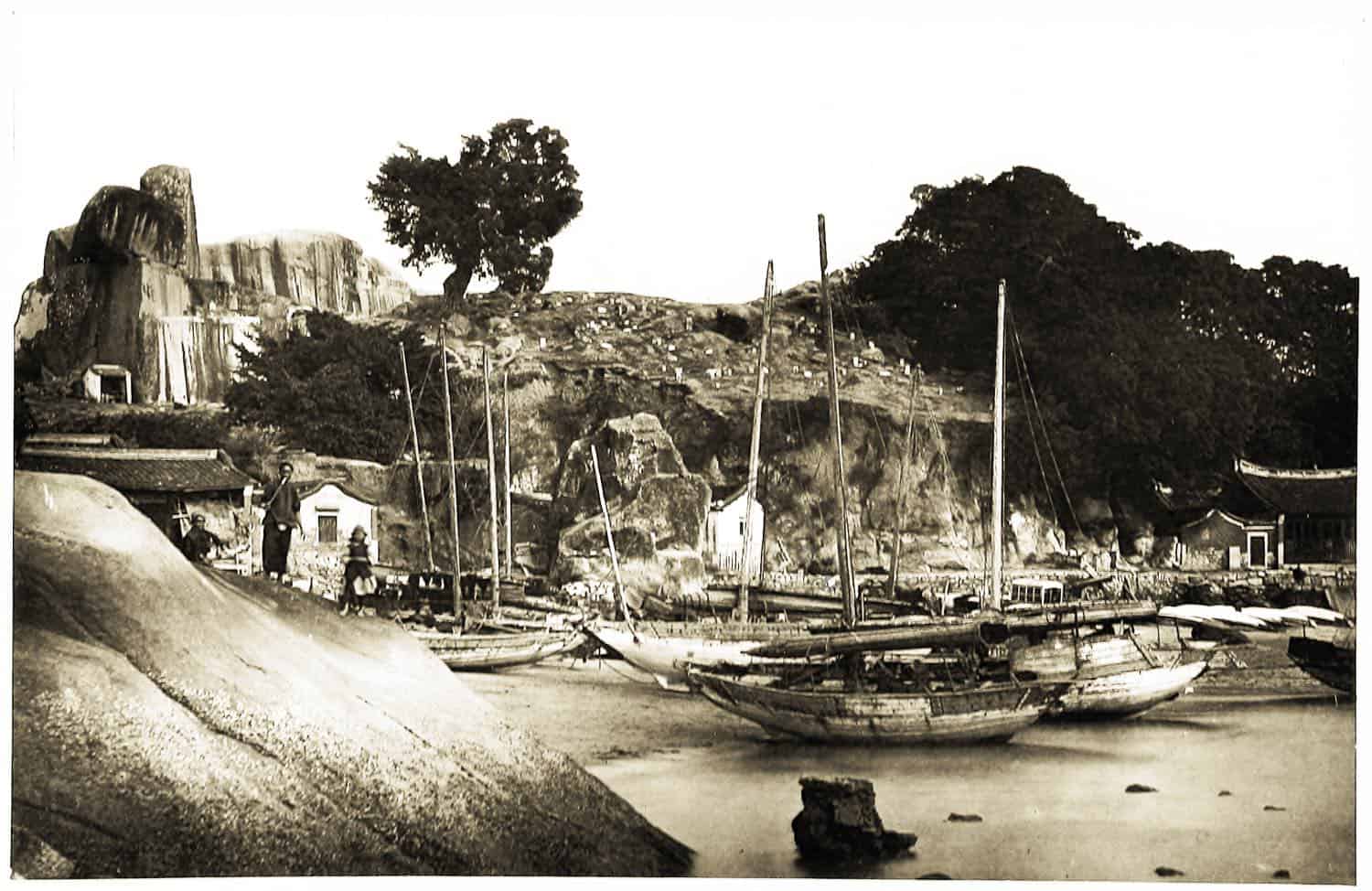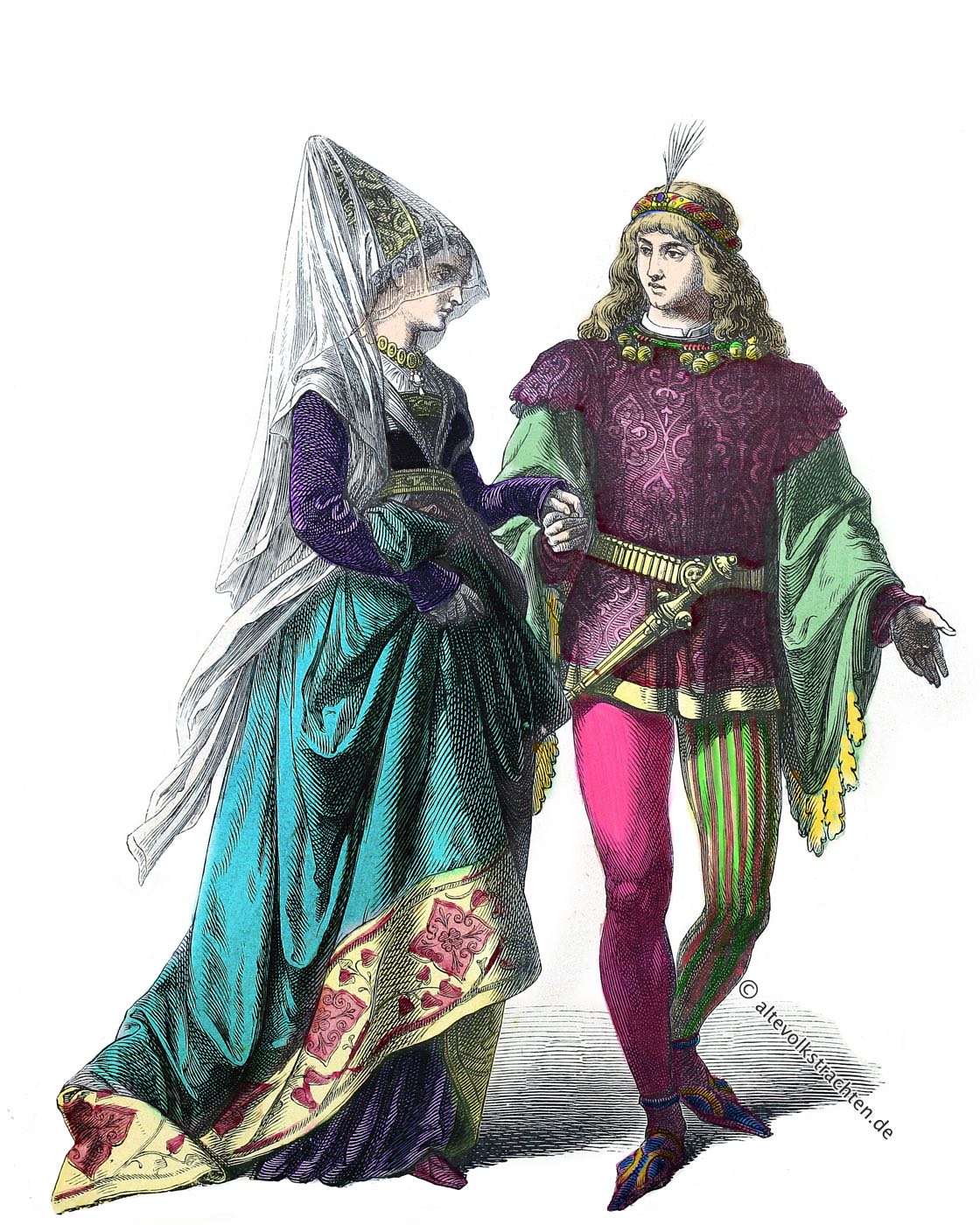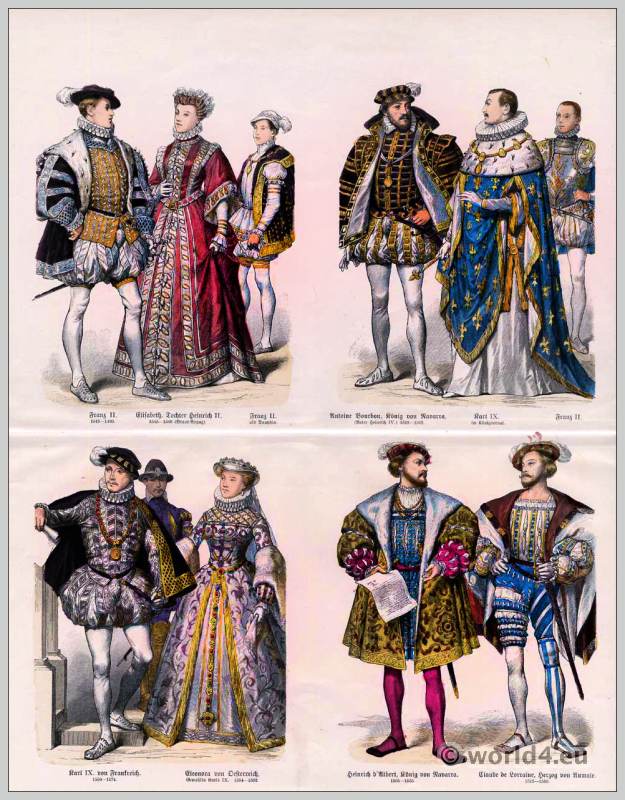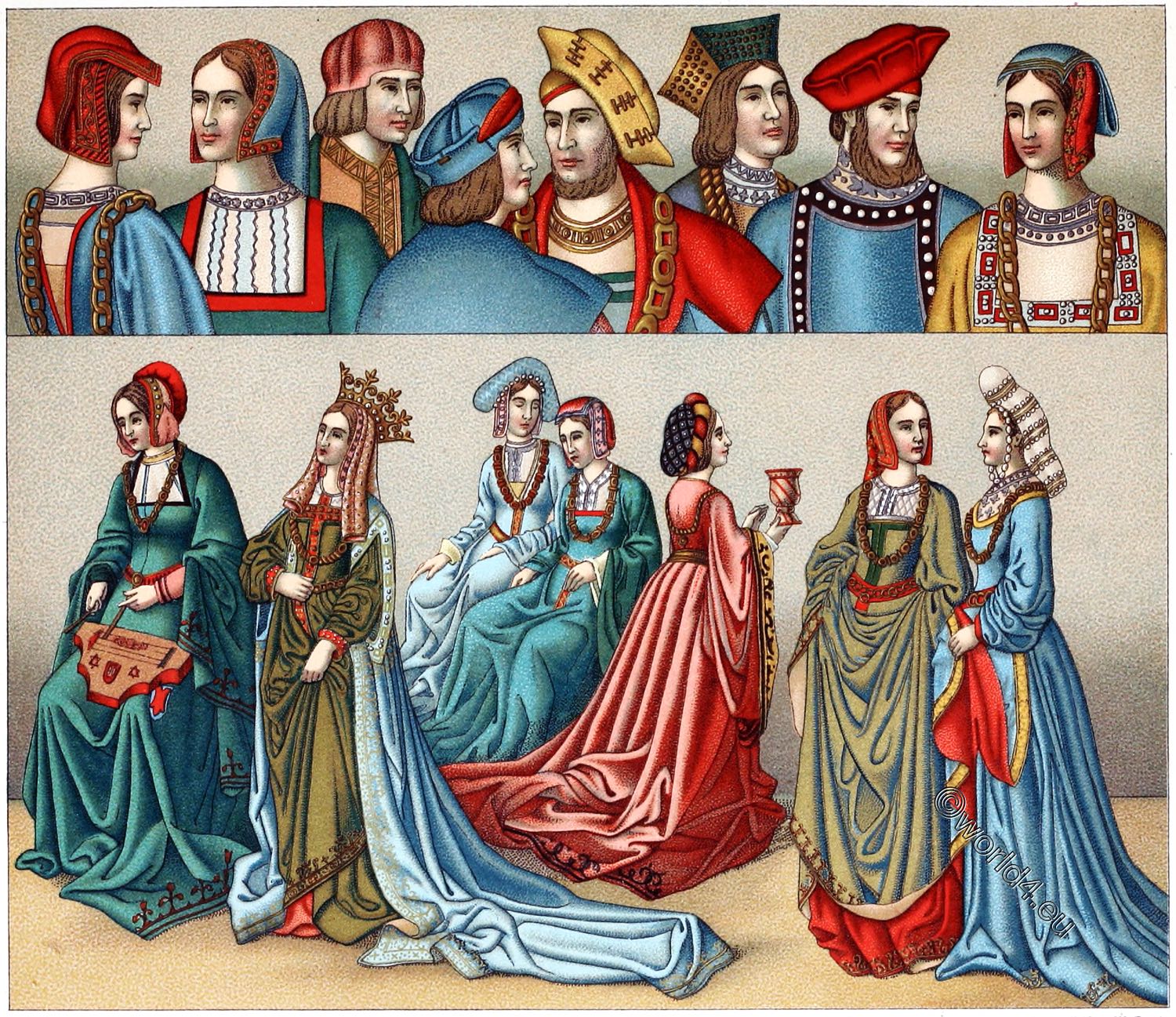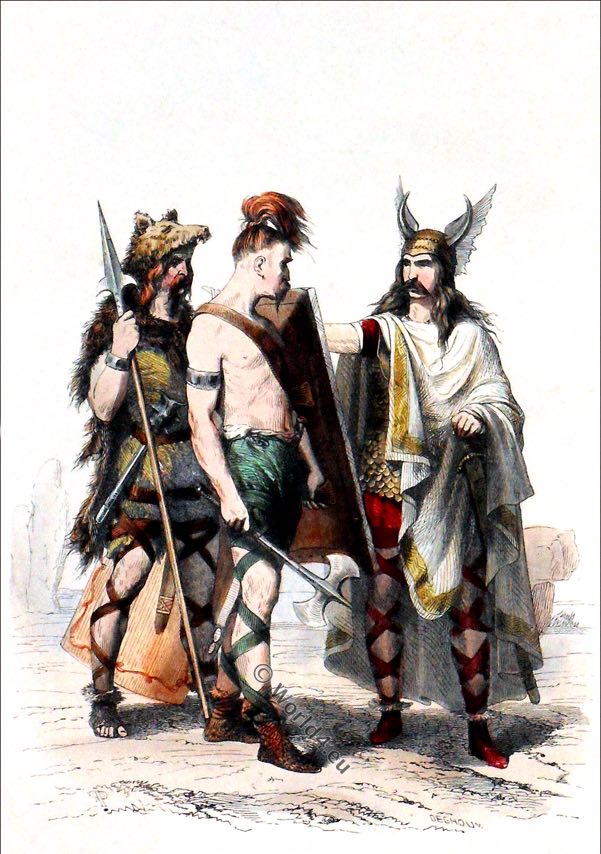
ITALY. THE DOGE OF VENICE AND THEIR OFFICIALS OF THE IX. XVI. CENTURY THE JEW IN THE XIV. CENTURY.
Nos. 1, 2 and 4th, Doge of the IXth century and two officials of his civil and military retinue; from the frescoes of St. Mark’s Church in Venice.
No. 2. The Doge: Doge’s cap with gold ring and precious stones; embroidered tunic with tight, long sleeves and metal belt; coat, held on the shoulder by a clasp; Byzantine shoes.
No. 1. swordtails: Gold trimmed cap, shoulder coat, tunic, shoes.
No. 4. Man of the Civil Corps: cap, tunic, coat, shoes.
Nos. 5, 6 and 15th Doge of the 11th century and entourage; from the mosaics of the portal of St. Mark’s (St. Mark’s Cathedral).
Number 15. The Doge, similar to Number 2.
Nos. 5 and 6. The entourage. Remarkable is the berretino, a round cap worn over an attached cap, decorated with silk strings at the front, the badge of the high dignitaries.
Nos. 7, 8 and 9. Doge of the 14th century and retinue; painting in the choir of St. Mark.
No. 8. Costume of the Doge from 1176 until the fall of the Republic: long tunic and drag cloak; corno with crown-like trimming; fur palatine; cloak interwoven with gold; plain tunic.
Nos. 7 and 9. Entourage: fur-trimmed cap; above the toga a long fur-trimmed coat; ermine collar
No. 3. Doge of the 15th century in war armour; painting by Spinelli in the town house of Siena, Corno; full armour; tunic with the lion of St. Mark; arm and leg splints; slit shoes.
No. 12th, Doge of the 16th century with umbrella holder; paintings by Giovanni Bellini (Academy of Fine Arts in Venice), as well as nos. 11, 13 and 14.
Corno, in the 15th century purple with gold, in the 16th entirely of gold fabric; ermine collar; the umbrella has been in use since 1176, when the Pope gave the Doge Ziani (Sebastiano Ziani (Sebastianus) 1102 – 1178 39th Doge) such a chair and a throne chair for him and his successors.
The patron is dressed with the berretino and the sleeve toga.
Number 11. Pillow bearer of the doge. Berrettino and short coat, called Dogaline.
Nos. 13 and 14. Trumpeter in the doge’s retinue: The placemats on the trumpets show the coat of arms of Venice in four panels.
No. 13. Berretino and Gavardina, short doublet.
No. 14. Small cap and shoulder cloak.
No. 10. Jewish merchant; end of the 16th century; frescoes by Guarienti in the choir of the hermits in Padua. Cap and hat; tunic with slit sleeves; belt with dagger and pouch; cloak open at the side, held on the shoulder by large gold buttons.
After watercolours by Stephan Baron. Cf. Vecellio, Costumes anciens et modernes.
Source: History of the costume in chronological development by Auguste Racinet. Edited by Adolf Rosenberg. Berlin 1888.
The Doge of Venice.
The Doge, (from Latin Dux) was the head of state of the Republic of Venice. The name is derived from a term used in Roman administration: from the 4th century onwards, dux (leader, chief, prince) was the Roman term for the supreme military commander of a border province. Originally the Doge was a local deputy of the Exarch of Ravenna, who in turn was the governor of the Byzantine Empire in northern Italy. With the emancipation of Venice from Byzantium, the Doge became the ruler of an increasingly independent state. The first Doge was long considered to be Paulicius, in Venetian historiography usually called Paoluccio Anafesto, but today Ursus (Orso Ipato) is considered to be the first Doge.
The Doge combined both military and judicial functions, so that the office had almost unlimited power in the early Middle Ages. This also included attempts to form a dynasty. Finally, in 1132/1148, the Doge was joined by the Grand Council and later the Council of Ten as a controlling body. The latter was something like the supreme supervisory authority. From then on at the latest, the office of the Doge was of a more representative nature, but the military supreme command remained with him.
Since the 14th century the Doge wore a special kind of headgear with the Corno Ducale. The Corno is a stiff cap with a horn-like tip and a crown-like metal ring. It is attributed on the one hand to the headgear of the fishermen and on the other hand to the “ducal hat”. Under the corno he wore the cuffia, a cap of fine linen. The coronation cap Zogia was made of brocade and decorated with precious stones, while the usual corno was made of less precious material. At the coronation the doge wore over a long undergarment, the dogalina, girded with a narrow belt with a golden buckle, a wide cape with a tippet-like collar of ermine fur, the bavaro.
The doge’s robe with stand-up collar included the striking buttons, the campanoni d’oro. The private clothing corresponded to the everyday clothes of a Venetian Nobile. The Dogaressa wore a smaller cap. Almost all the tombs of Doges are in Venetian churches, 27 in San Zanipolo alone, but the tomb of Enrico Dandolo is in the Hagia Sophia in Constantinople (Istanbul).
The last Doge, Ludovico Manin, abdicated on 12 May 1797, after the Great Council had previously dissolved itself.


